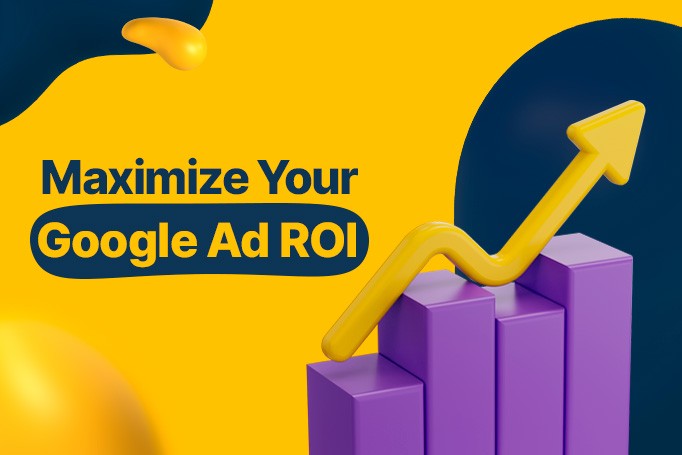
Introduction
Google Ads is a powerful tool for businesses looking to drive targeted traffic, increase conversions, and maximize their return on investment (ROI). However, to get the most out of your Google Ads campaigns, it’s crucial to implement best practices that enhance efficiency and effectiveness. This article delves into the best practices for maximizing ROI with Google Ads, providing actionable insights and strategies to optimize your ad performance.
Understanding Google Ads
What is Google Ads?
Google Ads is an online advertising platform developed by Google, where advertisers pay to display brief advertisements, service offerings, product listings, or videos to web users. It can place ads both in the results of search engines like Google Search (the Google Search Network) and on non-search websites, mobile apps, and videos (the Google Display Network).
Importance of ROI in Google Ads
ROI is a critical metric that determines the success of your Google Ads campaigns. It measures the profitability of your advertising efforts by comparing the revenue generated from the ads to the cost of running them. A higher ROI indicates more efficient and profitable ad campaigns.
Best Practices for Maximizing Your ROI with Google Ads
1. Conduct Thorough Keyword Research
Importance of Keyword Research
Keywords are the foundation of your Google Ads campaigns. Proper keyword research helps you understand what terms your potential customers are searching for and ensures that your ads appear for relevant queries.
Tools for Keyword Research
- Google Keyword Planner: A free tool that provides keyword ideas and traffic estimates.
- SEMrush: A comprehensive SEO tool that offers keyword research features.
- Ahrefs: Known for its robust keyword research capabilities and competitive analysis.
2. Optimize Your Ad Copy
Crafting Compelling Ad Copy
Your ad copy should be clear, concise, and compelling. It should highlight the unique selling points (USPs) of your products or services and include a strong call to action (CTA).
A/B Testing
Regularly perform A/B testing to compare different versions of your ad copy. This helps identify which variations perform better and refine your ads for maximum impact.
3. Utilize Ad Extensions
Types of Ad Extensions
Ad extensions provide additional information and increase the visibility of your ads. Types of ad extensions include:
- Sitelink Extensions: Link to specific pages on your website.
- Call Extensions: Add phone numbers to your ads.
- Location Extensions: Display your business address.
- Callout Extensions: Highlight additional text below your ad.
Benefits of Ad Extensions
Ad extensions improve ad visibility, increase click-through rates (CTR), and provide users with more reasons to engage with your ads.
4. Implement Effective Bidding Strategies
Manual vs. Automated Bidding
- Manual Bidding: Allows you to set bids for individual keywords or ad groups. It provides more control but requires constant monitoring and adjustments.
- Automated Bidding: Uses Google’s machine learning to automatically set bids to achieve your desired goals. It saves time and leverages Google’s data to optimize performance.
Choosing the Right Bidding Strategy
Select a bidding strategy that aligns with your campaign objectives, such as maximizing clicks, targeting specific CPA (cost per acquisition), or maximizing conversions.
5. Monitor and Optimize Campaign Performance
Key Metrics to Track
Regularly monitor key performance metrics such as CTR, conversion rate, CPA, and ROI. These metrics provide insights into how well your campaigns are performing and where improvements are needed.
Adjusting Campaigns Based on Data
Use the data collected from your campaigns to make informed adjustments. This could involve changing keywords, refining ad copy, adjusting bids, or reallocating budget to higher-performing campaigns.
6. Leverage Remarketing
What is Remarketing?
Remarketing targets users who have previously visited your website but did not convert. It allows you to re-engage these potential customers with tailored ads, increasing the likelihood of conversion.
Benefits of Remarketing
Remarketing helps improve conversion rates, enhances brand recall, and maximizes the value of your advertising spend by targeting users who have already shown interest in your offerings.
7. Optimize Landing Pages
Importance of Landing Page Optimization
Your landing page is where users arrive after clicking on your ad. An optimized landing page ensures a seamless user experience and improves the chances of conversion.
Key Elements of an Effective Landing Page
- Relevance: Ensure the content on your landing page matches the ad’s message and keywords.
- Clarity: Have a clear and concise headline, informative content, and a strong CTA.
- Design: Use a clean, visually appealing design that is easy to navigate.
- Speed: Ensure fast loading times to prevent users from bouncing.
Conclusion
Maximizing ROI with Google Ads requires a strategic approach that combines thorough keyword research, compelling ad copy, effective bidding strategies, and continuous performance monitoring. By implementing these best practices, you can enhance the efficiency and profitability of your Google Ads campaigns, driving better results for your business.
